Anxiety, panic and phobias
 On this page, we would like to give you an overview of the symptoms of anxiety and panic disorders as well as an insight into how and under what circumstances hypnotherapy at our practice in Berlin or Bavaria may be useful for you.
On this page, we would like to give you an overview of the symptoms of anxiety and panic disorders as well as an insight into how and under what circumstances hypnotherapy at our practice in Berlin or Bavaria may be useful for you.
Numerous detail pages on the most commonly treated anxiety disorders specifically inform you about the use of the Hypnos® method for a particular anxiety.
How hypnosis can help against anxiety and panic
Our experience has shown that Hypnos® Hypnotherapy allows many people with anxiety disorders to take exceptionally rapid approaches to symptom relief and complete healing. Let us just picture fears as fixed ideas. Their origin can be found in hypnosis – e.g. with the help of a regression – and can then be transformed into a better ‚idea‘.
Deep neuronal relaxation in the therapeutic trance state, the psychological reorganization effectively promoting suggestions and the often amazingly high effectiveness of energetic anxiolytic techniques can lead to lasting success. They pave the way to a fearless, powerful life.
The treatment of specific phobias in practice often proves to be a fascinating example of the great effectiveness of hypnosis. Thus, it is not unusual to have only one or two sessions to resolve years of specific phobias.
In the state of a hypnotic healing trance, blockades can be solved energetically, resources can be determined and made available. The tool of self-hypnosis also allows the client after the session – and basically at any time it appears helpful – to go into a resourceful state of relaxation, so as to be sure, even in intensely dreadful situations, to keep their calm and stay in control.
Below you will learn more about the nature and background of panic, fears and phobias.
Fears and panic – when do we speak of a „disorder“?
Fears are vital to protect us – they are designed to be the perfect warning mechanism that avoids danger. The body functions change in a flash in the sense of providing energy for fight and flight.
This natural psycho-physical protective mechanism is called „signal anxiety“.
But if anxiety has a disease value, it impedes the preponderance of the functions required for a balanced psychic life.
Anxiety is always classified as pathological if one or more of the following criteria are met:
- Anxiety becomes excessively severe when it occurs
- Fear is permanent
- It occurs on a par with no real danger (panic)
- There are nonsensical fears of basically harmless things or situations (phobic anxiety, s.u.)
Which factors promote the development of anxiety disorders?
In addition to a number of physical causes – excluding those should always be prior to the start of psychotherapeutic treatment – certain personality traits disproportionately often occur in anxiety patients.
So it can be surmised that these characteristics represent a kind of „personal vulnerability“, a vulnerability or an increased sensitivity. This can – especially if the living conditions contribute to it (stress, overwork, unhealthy diet, addiction problems) – lead to the development of an anxiety disorder.
Personality traits that may be associated with increased anxiety are, for example:
- Rigid thought patterns. The tendency to so-called „black-and-white thinking“ usually goes hand in hand with very precise ideas about what one should, should or must not.
- Imagination and creativity. Great imagination helps to promote a negative „what if?“ Attitude.
- Excessive need for confirmation. Low self-esteem, fear of rejection, self-esteem is made dependent on other people’s judgment.
- Perfectionism / high self-assertion. Small mistakes and errors are overrated, events are easily judged to be failures or personal failures. „Yes, but …“ – sentences often appear.
- Excessive need for control. Outwardly always controlled and calm appearance, spontaneous changes and uncertainties cause great discomfort.
- Suppression of negative feelings. Anger and sadness are seen as a sign of a loss of control and denied, also for fear of the disapproval of other people.
- Ignoring physical needs. Fatigue, pain or the need for rest and protection are classified as unimportant and repressed. Physical symptoms are only perceived when they occur massively.
Furthermore, there is a connection between certain childhood experiences and the increased probability of the occurrence of an anxiety disorder. These childhood experiences include, for. B .:
- Alcoholism in the family
- Physical abuse
- Sexual abuse
- Neglect
- Cruel and inappropriate punishment
- Emotional neglect
- Mental abuse
- An example of an anxious parent
- Supercritical parents or relatives
- Rigid family rules, rigid value system
- Emphasis on externals
- Excessive care
- Denial of feelings
- Performance-related care
- Loss of separation and separation through divorce, death or ignorance
- Role reversal for sick, absent or very busy parents
What are specific phobias?
A fear is labeled as „phobic“ when it reliably appears in confrontation with the phobically feared object and is excessively violent.
Specific phobias can arise when a negative experience with a certain object or in a certain situation is „stored“ as a danger signal in the amygdala. This area of the brain has the task of avoiding the recurrence of danger once experienced by triggering an unconscious and automatic anxiety reaction when encountering the object or the situation again.
Often, those affected can not remember the initial triggering situation („ISE / Initial Sensitizing Event“) because it occurred when they were very young, mostly under the age of 3. The hippocampus – the brain structure, which is mainly associated with the creation and storage of memories – matures much more slowly than the „danger storage unit“ amygdala. So it is possible that anxiety-triggering events cannot be consciously recalled, yet trigger phobic reactions.
Energetic hypnotherapy in many cases enables a „decoupling“ of the hitherto phobically feared object / situation from the perception of fear and can thus quickly and permanently dissolve specific phobias.
The most common specific phobias
- Fear of animals, „Zoophobia“
(e.g., from dogs, cats, spiders, mice, snakes, insects) - Having to stay in closed rooms, „claustrophobia“
- Sight of blood, „Haimaphobia“
- Contagion fear
- Fear of heights, „acrophobia“
- Flying in the plane, „fear of flying“ or „aviatophobia“
- Dental fear
- Fear of vomiting, „emetophobia“
- Fear of blushing, „erythrophobia“
Special variants of phobia
- Agoraphobia – the fear of being „exposed“, outside the familiar environment, on streets, squares
- Social phobia – the fear of embarrassing oneself, feeling of observation by others, extreme shyness (see below)
Your hypnotherapy for anxiety and panic
- Individual hypnotherapy using the Hypnos® method
within just 2 to 5 intensive sessions (most commonly booked: Our package 9+1) - You only book as many sessions as you really need.
Get detailed and noncommittal advice by using our contact form,
to find out everything about the hypnotherapy you need. - Plus 1 hour of telephone support by your therapist
- Plus teaching powerful self-help techniques
- Plus audio material as CD or MP3, created individually for you
- Plus mediation of self-hypnosis
- Plus Self-hypnosis deepening audio via CD or MP3
- Plus individual handouts
All important questions about the therapy organization, we answer collected on the page Pricing and Advantages.



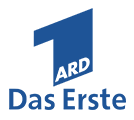







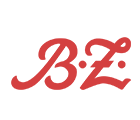





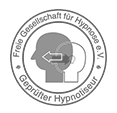
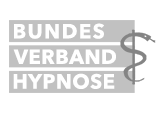

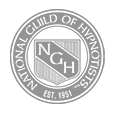
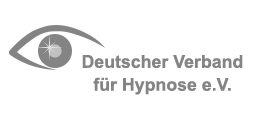
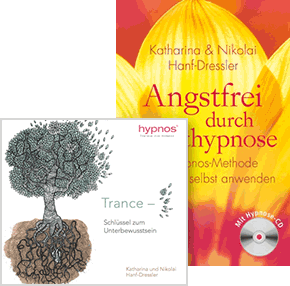 Get to know our book published in Ullstein publishing house and the audio CD by the heads of The Hypnos® center.
Get to know our book published in Ullstein publishing house and the audio CD by the heads of The Hypnos® center.